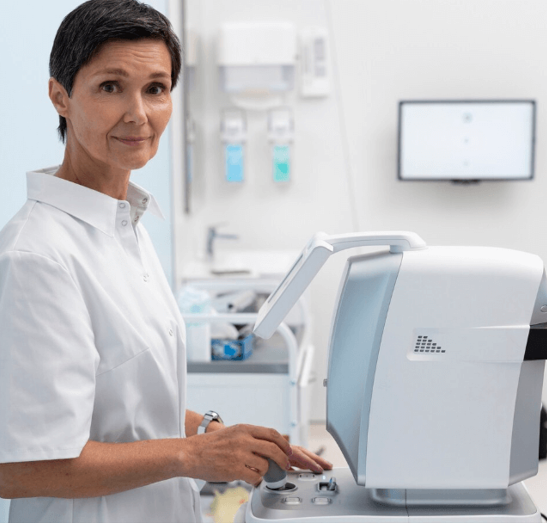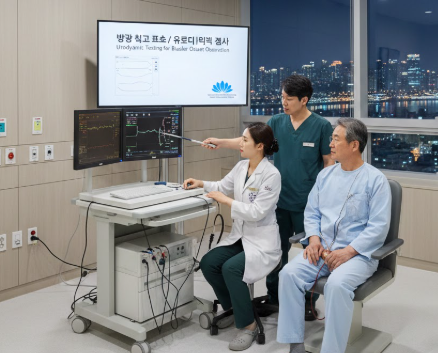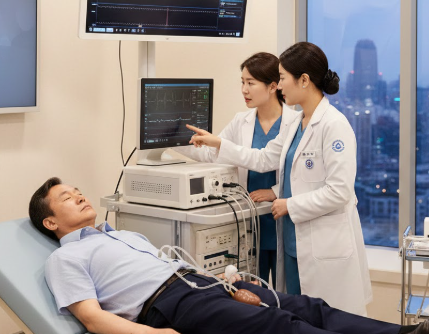Treatment Overview
The Precision-Guided Robotic Uterus Removal (PGRUR) in Korea is one of the most advanced forms of minimally invasive hysterectomy available today. By integrating state-of-the-art robotic surgical systems with precision-guided imaging, Korean surgeons can perform uterus removal with exceptional accuracy, minimal tissue trauma, and optimal functional preservation.
This approach uses robot-assisted laparoscopic technology with high-definition 3D visualization, giving surgeons unmatched control, dexterity, and precision in even the most delicate cases. Korean hospitals lead the world in robotic gynecologic surgery by combining superior technology, highly trained surgeons, and meticulous pre- and post-operative care.
Purpose & Benefits
Purpose:
- Offer a highly precise uterus removal option for benign and malignant conditions
- Preserve surrounding structures while removing the uterus completely
- Reduce surgical trauma and optimize recovery through robotic precision
Benefits:
- Exceptional surgical accuracy and control
- Reduced intraoperative bleeding and postoperative pain
- Minimal scarring due to small incisions
- Shorter hospital stays (often 1–2 days)
- Faster recovery and return to normal life
- Lower risk of complications
- Enhanced functional and aesthetic outcomes
Ideal Candidates
PGRUR is suitable for women who:
- Require uterus removal for conditions such as fibroids, adenomyosis, endometriosis, prolapse, or cancer
- Prefer a minimally invasive robotic surgery with precision guidance
- Wish to minimize scarring and postoperative recovery time
- Are in good general health and suitable for laparoscopic surgery
Before surgery, Korean hospitals conduct detailed diagnostic imaging and physical evaluations to ensure suitability and personalize surgical planning.
Possible Risks & Complications
While robotic-assisted surgery is highly precise, potential risks include:
- Minor bleeding or infection
- Injury to adjacent pelvic organs (rare)
- Temporary urinary or bowel discomfort
- Anesthesia-related complications
- Rare scar tissue or adhesion formation
Korea’s robotic surgery centers minimize risks using real-time 3D imaging, robotic precision tools, and nerve-sparing techniques.
Surgical Techniques Used
Korean hospitals use cutting-edge robotic platforms such as the da Vinci Surgical System, combined with precision guidance technologies:
- 3D High-Definition Imaging: Provides deep anatomical detail for exact tissue dissection.
- Robotic-Assisted Laparoscopy: Offers enhanced dexterity, tremor reduction, and precise control.
- Fluorescence-Guided Imaging (ICG): Enhances identification of blood vessels and vital structures.
- Energy-Based Vessel Sealing (Ultrasonic/Bipolar Devices): Ensures clean, efficient dissection.
- Single-Port Robotic Surgery (when indicated): Minimizes scarring and expedites recovery.
These techniques allow Korean surgeons to perform complex uterus removal with maximum accuracy and minimal invasiveness.
Recovery & Aftercare
Robotic uterus removal offers one of the fastest and least painful recovery experiences among hysterectomy procedures. Patients typically stay in the hospital for 1–2 days and can resume light activity within a week.
Postoperative care includes:
- Pain management and incision monitoring
- Avoiding heavy lifting or strenuous activity for several weeks
- Regular follow-up visits for recovery evaluation
- Pelvic floor rehabilitation (if recommended)
- Nutritional and hormonal guidance to support recovery
Korean hospitals emphasize personalized recovery plans and holistic aftercare, including physical therapy and emotional wellbeing programs.
Results & Longevity
Patients undergoing PGRUR enjoy durable, long-term benefits:
- Complete removal of uterine tissue with precision
- Minimal postoperative pain and reduced complications
- Superior cosmetic results with small incisions
- Maintained pelvic function and reduced risk of adhesions
- Faster return to daily life and improved quality of life
Korean centers track outcomes rigorously, ensuring consistently high patient satisfaction.
Treatment Process in Korea
Korea’s robotic uterus removal pathway is structured for efficiency and patient comfort:
- Preoperative Consultation & Diagnostics: Includes MRI, ultrasound, and pelvic evaluation.
- Customized Surgical Planning: Based on patient anatomy, pathology, and health.
- Precision-Guided Robotic Surgery: Performed with advanced imaging and robotic systems.
- Postoperative Care: Includes physiotherapy, nutritional counseling, and follow-up checkups.
International patients receive full support, including language services, airport transfers, and recovery assistance.
Cost Range
The Precision-Guided Robotic Uterus Removal in Korea generally ranges between USD 12,000 and 22,000, depending on:
- Complexity of the case
- Type of robotic system and imaging used
- Surgeon’s experience and hospital reputation
- Length of hospital stay and aftercare requirements
Packages usually include all consultations, surgery, anesthesia, hospitalization, and follow-up care.
Popular Clinics
- Samsung Medical Center (Seoul): Renowned for robotic-assisted gynecologic surgeries with precision guidance.
- Asan Medical Center (Seoul): Offers world-class robotic uterus removal with advanced imaging support.
- Severance Hospital (Yonsei University Health System, Seoul): Leader in robotic gynecologic surgery and holistic recovery.
- CHA Gangnam Medical Center: Specializes in minimally invasive robotic procedures for uterus removal.
- Ewha Womans University Medical Center: Known for precision robotic surgery with patient-focused recovery programs.




